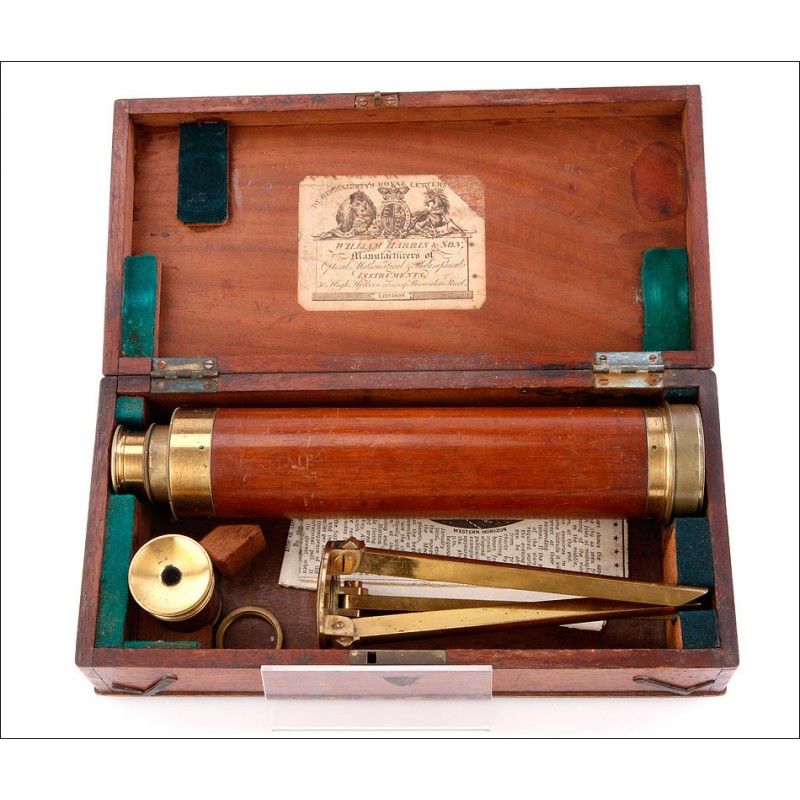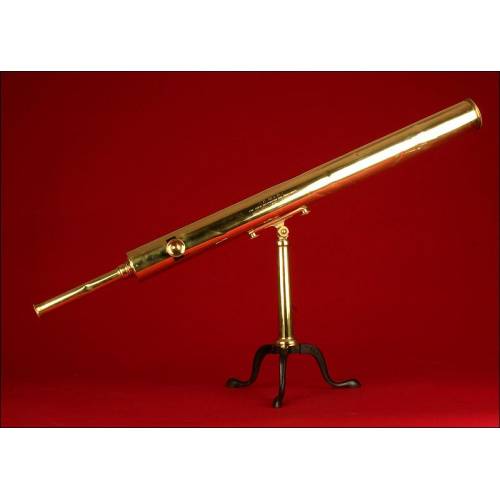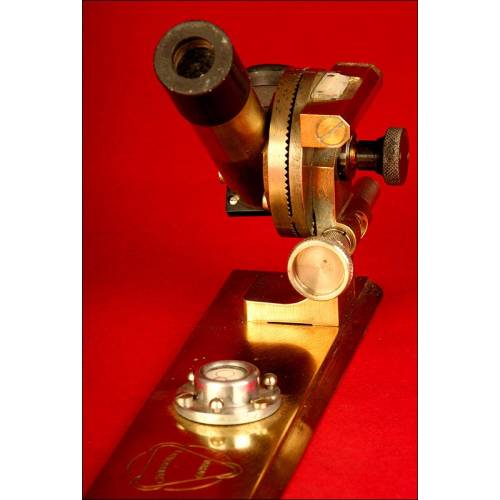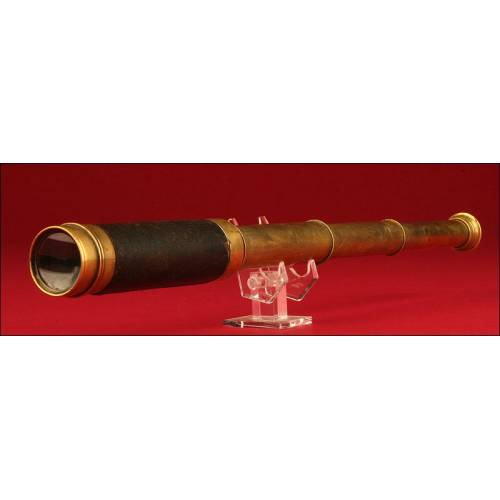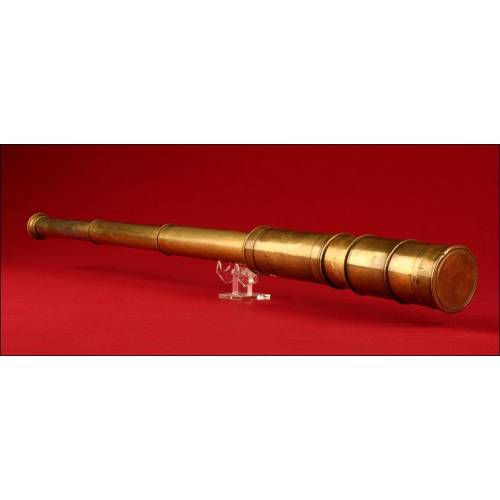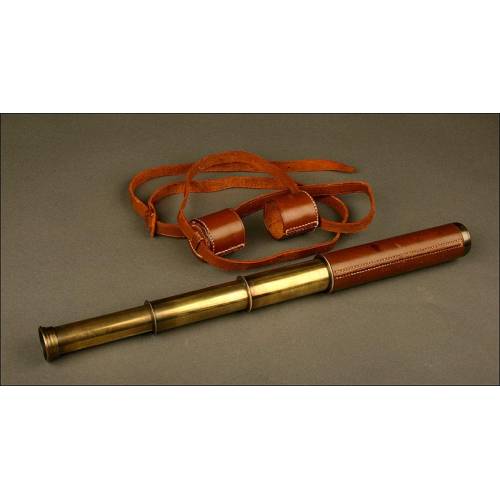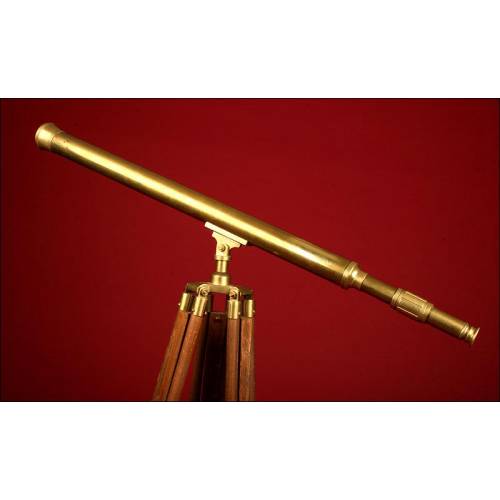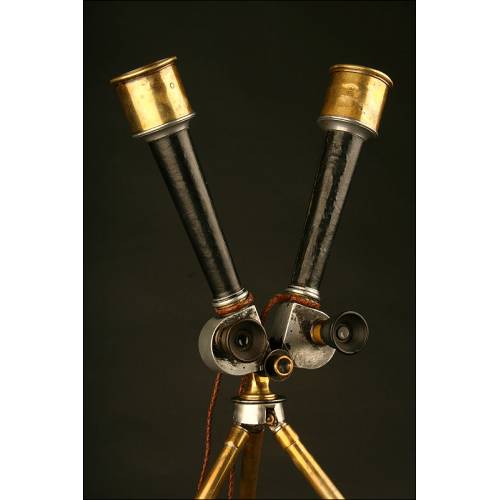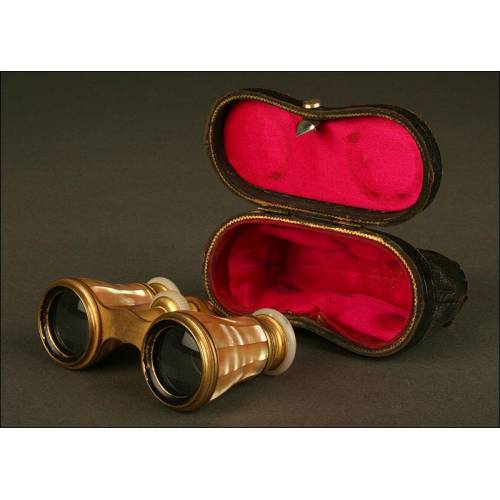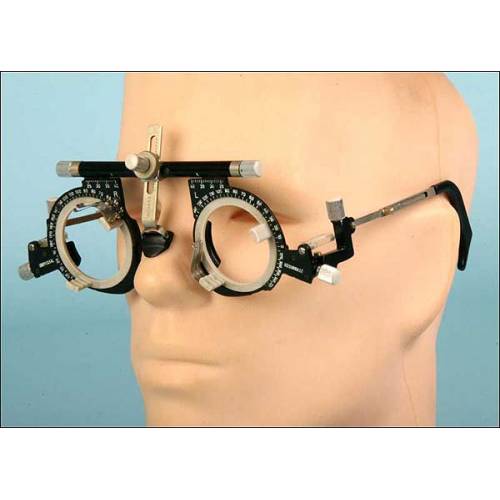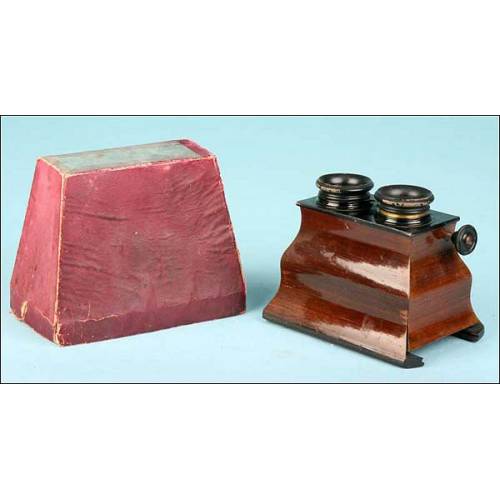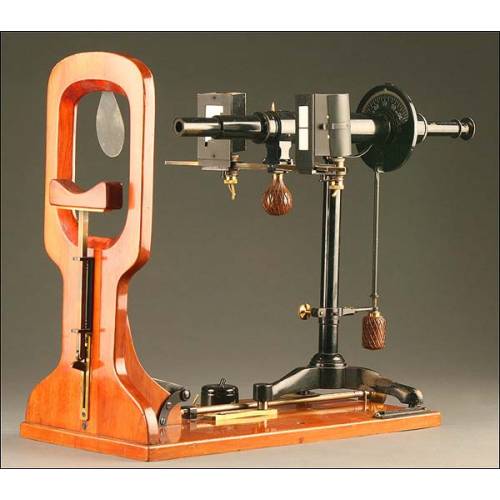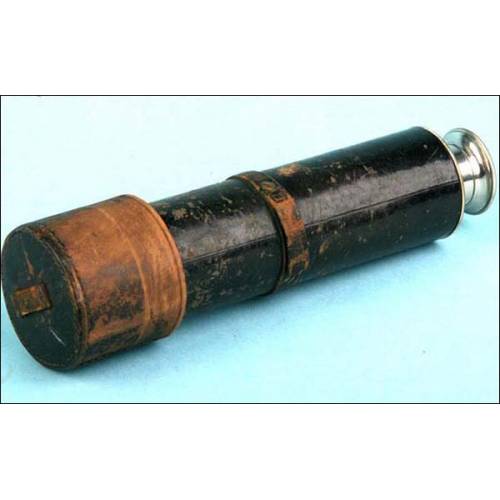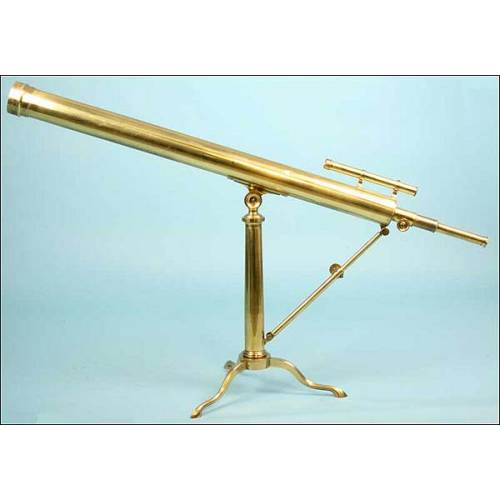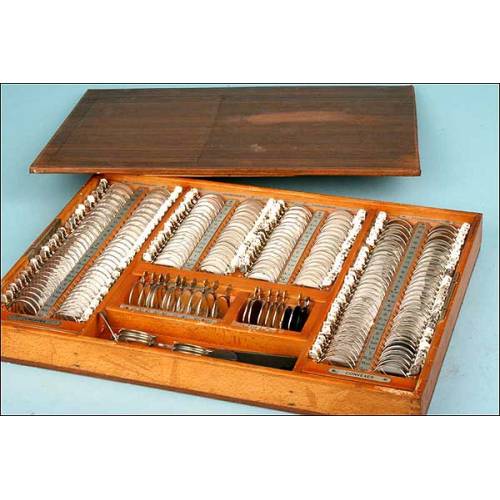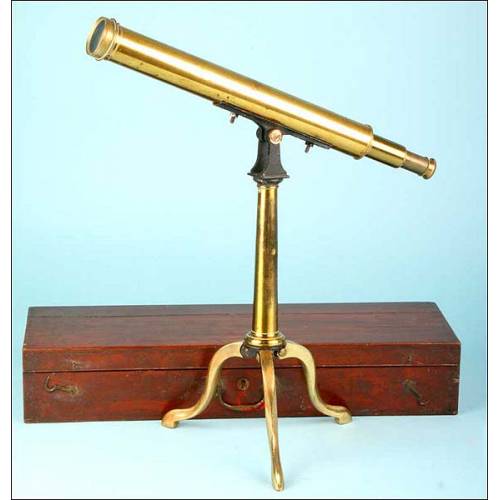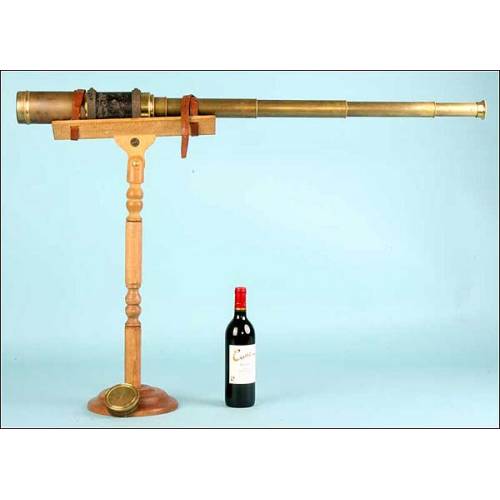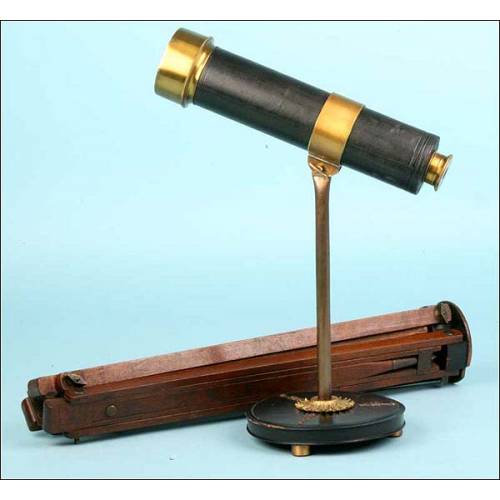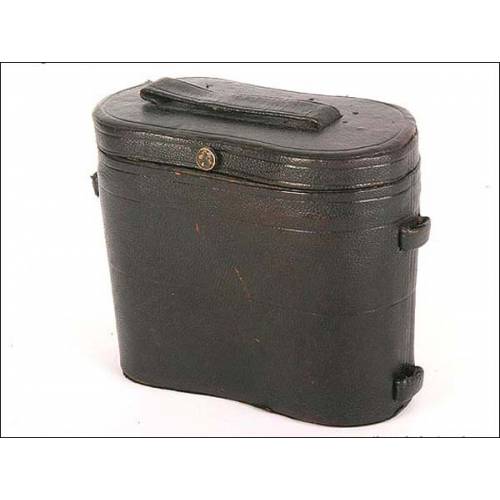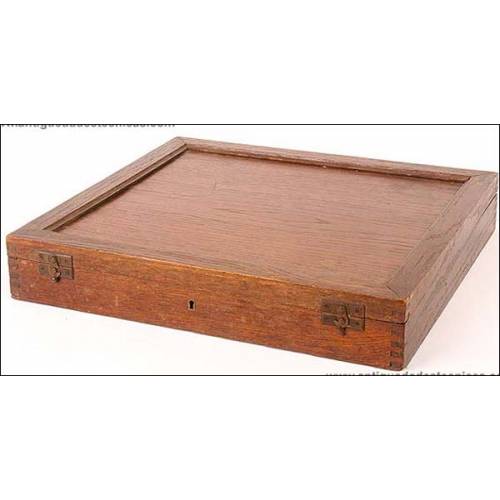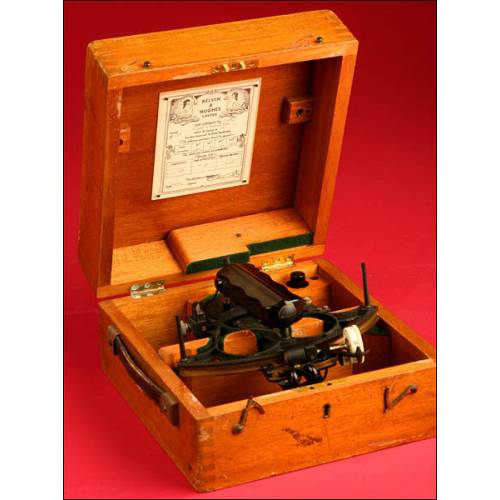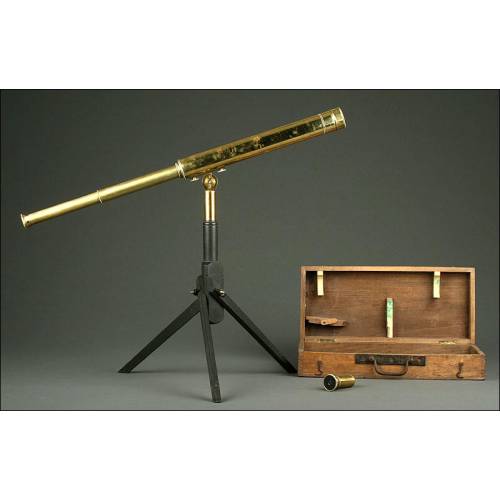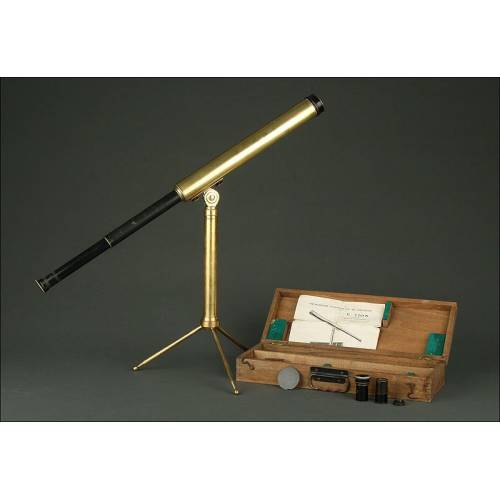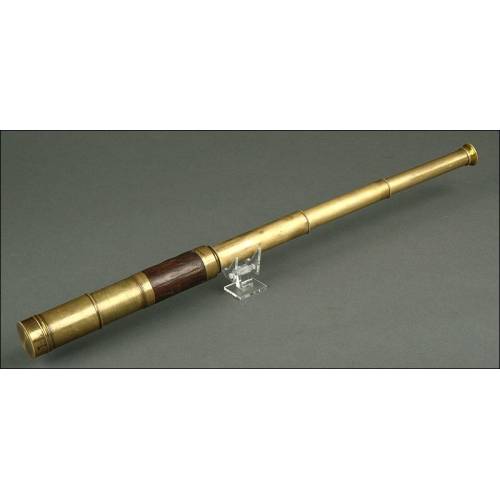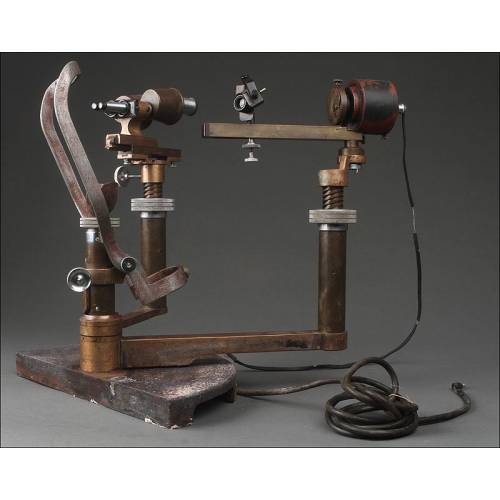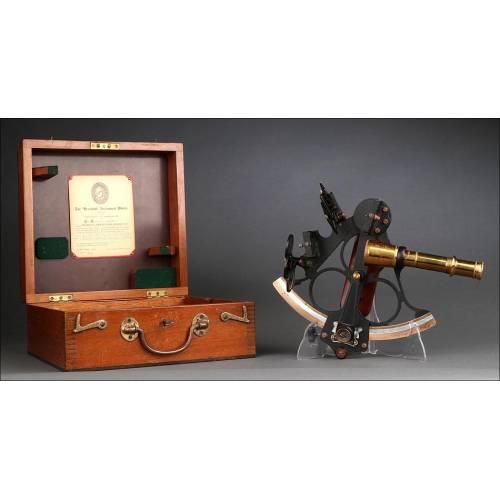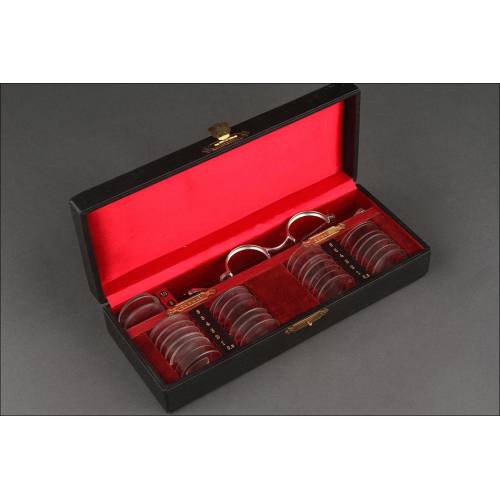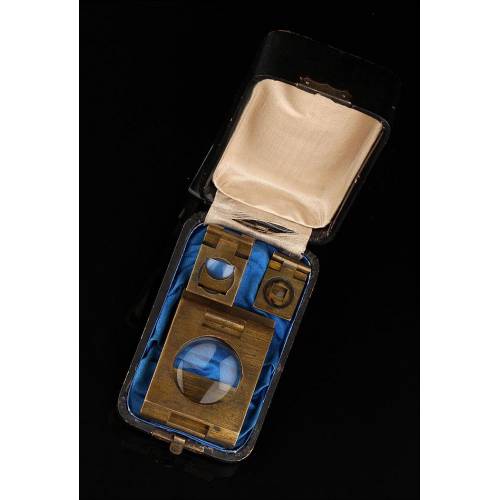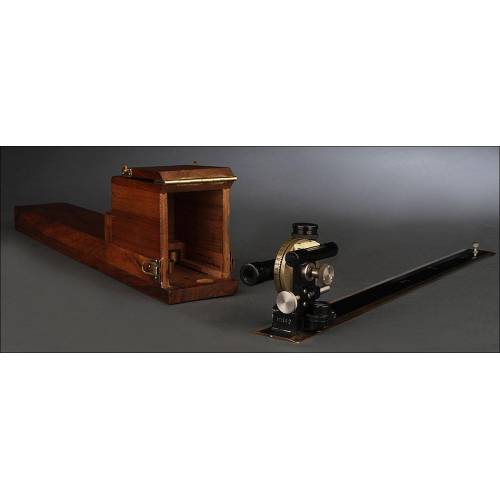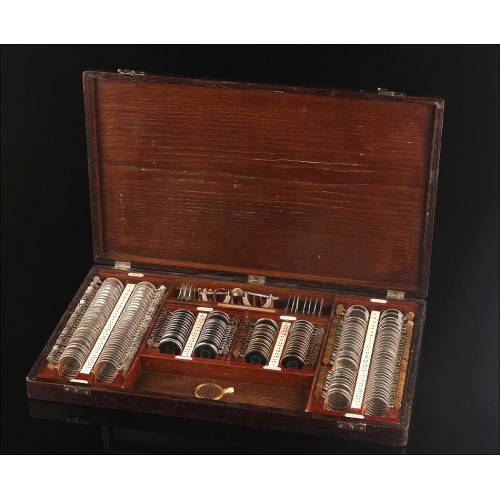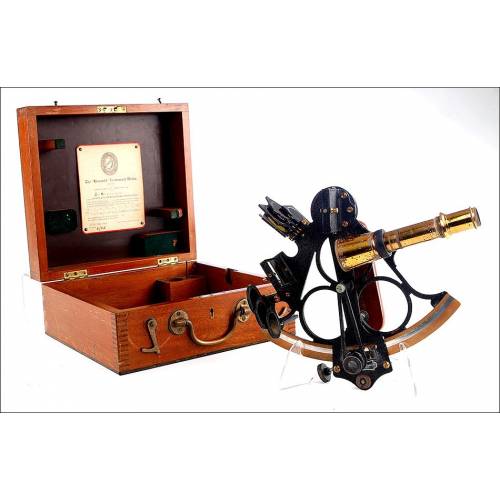C-010
William Harris & Son Antique Marine Glass. England, Circa 1850
Magnificent antique William Harris & Son marine spyglass from the mid 19th century. Storage case.
Sold!
Amazing antique marine spyglass or telescope made by William Harris & Son circa 1850. This item is made of mahogany wood and golden brass and comes in its original storing case. The spyglass is in good condition and perfect working order; the lenses are original from the period and the telescope can be perfectly used to view faraway objects and landscapes. It comes with a golden-brass desk tripod in good condition (without connecting piece) and a solar filter, although I have not been able to find out where or how it is placed. The spyglass is a five-bodied model, with the main body made of mahogany wood and the rest of brass. The mahogany body is in quite good condition and preserves the fine satin finish, showing scarcely any signs of wear. The smallest brass body, the one that mounts the eyepiece, bears a hand-engraved inscription with the manufacturers name and address: W. Harris & Son 50 Holborn London. This name is also printed in the ancient label stack inside the cases cover. The case itself is a beautiful mahogany wooden box with the original shutting hooks, perfect to store the spyglass and its accessories. Gorgeous and complete, this stunning antique marine Spyglass signed by William Harris & Son will stand out in the most special place of any house. Measurements: Width: 2.3 in / 6 cm. Length: Folded: 10.2 in / 26 cm. Unfolded: 37 in / 94 cm.William Harris & Son History The Harris familiy started designing and producing different optic instruments in 1673. That year they opened their first workshop at the Maypole, in London. There were several members of the family who produced optic instruments such as spectacle glasses, microscope lenses and telescope lenses. With the trace of time they opened more workshops to manufacture rules, chronometers, balances, globes, charts, watches, hydrometers, sundials, compasses, octants and telescopes. They had their own brass foundry and operated many retail shows where they sold their instruments over two hundred years. In the 1850s the business was at its highest: William Harris had recently partnered with W. Campbell and his products were starting to be commercialized in different parts of Europe.

